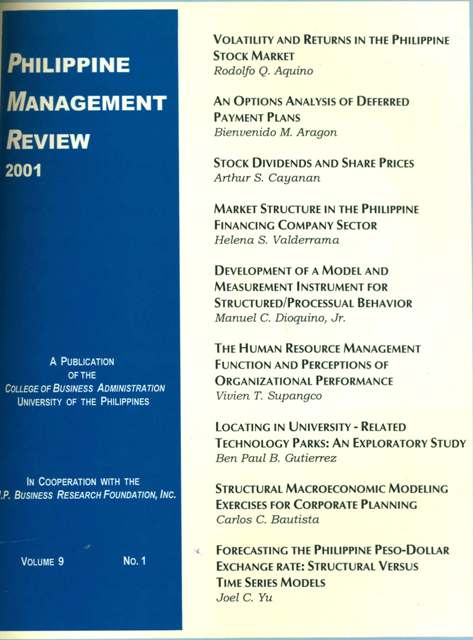Forecasting the Peso-Dollar Exchange Rate: Structural versus Time Series Model
Abstract
This paper compares the predictive power of different models of the peso-dollar exchange rate. Structural and time series models were estimated using monthly data from 1980 to 1998; out-of-sample forecasts for the period 1999 and 2000 were generated from the different models.
Using root mean square error as the principal criterion, findings show that in the short term (i.e., three-, six- and twelve-month forecasts), the random walk model outperforms all the alternative models considered in this study. In contrast, the structural monetary model had the worst performance despite the fact that these were based on the actual realized values of the independent variables.
For the 24-month forecast, the structural monetary model had a marked improvement in the forecast accuracy. Yet, it continues to pale in comparison to the performance of the models that are based on the random walk, the random walk with drift, and the purchasing power parity model.
